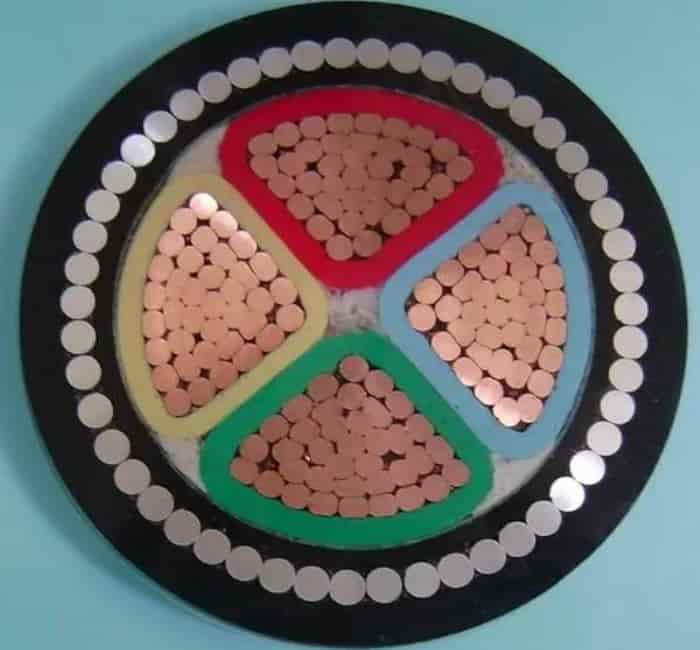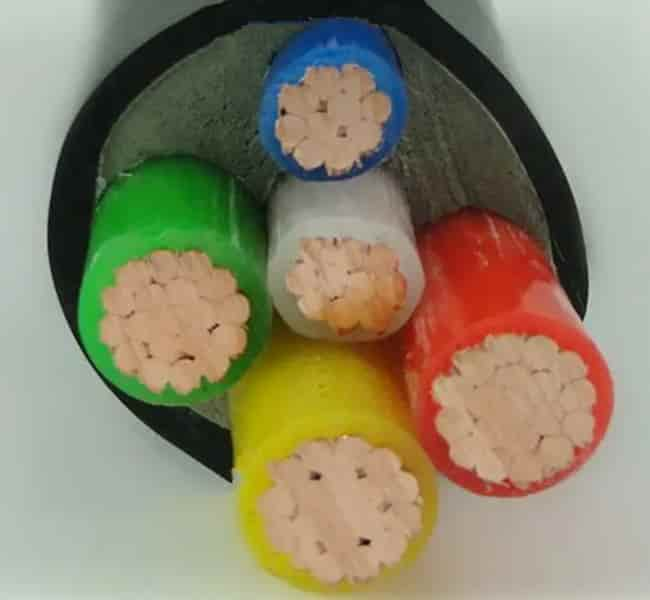
In the intricate world of electrical engineering, cables play a pivotal role in connecting power sources to loads, enabling the seamless flow of energy that drives modern society. Among these cables, DC (Direct Current) cables and AC (Alternating Current) cables stand out as two fundamental types, each with its unique characteristics and applications. This article delves into the similarities and differences between DC cables and AC cables, highlighting their respective strengths and suitability for various power transmission needs. As we explore these topics, we’ll keep our focus on the target keywords «cable AC power» and «cable DC power,» ensuring our content is optimized for search engine visibility while providing valuable insights for potential customers.
Direct Current Cable and alternating Current Cable Similarities
1. Core Functionality
At their core, both DC cables and AC cables serve the same fundamental purpose: to transmit electrical energy from one point to another. They are the lifeblood of any electrical system, ensuring that power reaches where it’s needed, whether it’s powering a household appliance or fueling a massive industrial operation.
2. Insulation and Protection
Both types of cables require insulation to prevent current leakage and protect against electrical shocks. The insulation material, whether it’s PVC, XLPE (Cross-Linked Polyethylene), or another advanced polymer, is designed to withstand the rigors of electrical transmission while maintaining structural integrity. Additionally, both DC and AC cables often feature protective jackets to shield against physical damage, environmental factors, and potential hazards.
3. Standardization
The production of both DC and AC cables adheres to international standards set by organizations like the International Electrotechnical Commission (IEC) and the National Electrical Manufacturers Association (NEMA). These standards ensure that cables are manufactured to consistent specifications, allowing for easy integration into existing electrical systems and facilitating interoperability across different equipment and technologies.

Direct Current Cable and Alternating Current Cable Differences
1. Electrical Properties
AC Cables: Alternating current (AC) is characterized by a sinusoidal waveform that reverses direction periodically. This property enables AC cables to transmit power over long distances with minimal energy loss due to the skin effect, which confines current flow to the outer layer of the conductor. AC cables are also well-suited for voltage transformation, making them ideal for integrating into power grids that require step-up and step-down transformers.
DC Cables: Direct current (DC) flows in a single direction, making it inherently more stable than AC. DC cables excel in applications where a constant, uninterrupted flow of electricity is crucial, such as data centers, electric vehicles, and solar panel arrays. The absence of AC’s inherent voltage fluctuations means DC cables can transmit power more efficiently over short to medium distances, especially when paired with advanced converter technologies.
2. Efficiency and Losses
AC Cables: While AC cables are efficient for long-distance transmission due to the skin effect, they can experience significant power losses due to the reactive components of AC circuits (e.g., inductance and capacitance). These losses can be mitigated through the use of compensation devices, but they remain a factor to consider in AC transmission systems.
DC Cables: DC cables offer higher transmission efficiency over shorter distances, as they eliminate the losses associated with AC’s reactive components. This makes DC cables an attractive option for high-power, short-distance applications, such as within data centers or electric vehicle charging stations. Additionally, high-voltage DC (HVDC) transmission systems can transmit vast amounts of power over long distances with minimal losses, making them a viable alternative to AC for certain intercontinental and underwater transmission projects.
3. Applications
AC Cables: Due to their widespread adoption in power grids, AC cables are ubiquitous in homes, businesses, and industrial settings. They are used to distribute power from substations to end-users, powering everything from light bulbs to industrial machinery. AC cables are also the backbone of the power grid, facilitating the interconnection of various generation sources (e.g., coal, nuclear, renewables) and enabling the efficient distribution of electricity across vast distances.
DC Cables: DC cables find their niche in specialized applications where stability, efficiency, or both are paramount. In data centers, DC power distribution systems reduce energy loss and improve reliability by eliminating the need for AC-to-DC conversions at the load level. For electric vehicles, DC fast charging stations can recharge batteries faster than AC-based systems, making them a popular choice for commercial and public charging infrastructure. Additionally, DC cables are increasingly being used in renewable energy projects, such as solar farms and wind turbines, where they help convert the variable output of these sources into stable DC power for transmission or storage.
DC Cable and AC Cable Sales Perspective: Choosing the Right Cable for Your Needs
When selecting between DC cables and AC cables for your power transmission needs, it’s essential to consider your specific application requirements, cost-benefit analysis, and long-term goals.
1. Application Requirements
Identify the unique challenges and demands of your power transmission system. If you’re working on a long-distance transmission project, AC cables may be the more suitable choice due to their efficiency over vast distances. However, if you’re focused on optimizing energy efficiency and reducing losses within a data center or EV charging station, DC cables could offer significant advantages.
2. Cost-Benefit Analysis
Evaluate the total cost of ownership (TCO) for both DC and AC cable solutions. Consider factors such as initial investment, installation costs, operational efficiency, maintenance requirements, and potential energy savings. While DC cables may have a higher upfront cost due to their specialized nature, their superior efficiency and reliability can often translate into long-term cost savings and increased ROI.
3. Long-Term Goals
Think about your organization’s long-term goals and how they align with the benefits of DC and AC cables. Are you looking to reduce your carbon footprint by integrating renewable energy sources? DC cables may be a better fit for this purpose due to their efficiency in converting and transmitting DC power generated by solar panels and wind turbines. On the other hand, if you’re expanding your power grid to accommodate growing demand, AC cables may offer a more scalable and cost-effective solution.
DC Cable and AC Cable Conclusion
DC cables and AC cables each have their own set of advantages and limitations, making them suitable for different types of power transmission applications. By understanding the similarities and differences between these two types of cables, you can make an informed decision about which solution best meets your specific needs. As a trusted supplier of high-quality electrical cables, we offer a wide range of DC and AC cable solutions tailored to meet the diverse requirements of our customers. Whether you’re looking to upgrade your data center’s power distribution system or expand your renewable energy portfolio, we have the expertise and products to help you achieve your goals. Contact us today to learn more about how our cable solutions can enhance the performance and efficiency of your power transmission systems.
